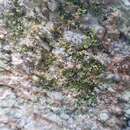Biology
provided by Arkive
All species of Calicium lichen have fruiting bodies, which decompose when ripe into a mass of spores. As they are small, they are often overlooked, and the best way of identifying the different species is by examining the thallus or main body of the lichen. However, as some species remain concealed within the wood or bark of trees, this can prove difficult.Lichens are fascinating things, being a partnership between two different types of organism. In most examples, this is an alga, and a fungus. The fungus is the part of the lichen we usually see as it makes up the main body of the organism. However, the alga - unlike the fungus - is capable of manufacturing its own food by photosynthesis. The fungus provides the alga with a place to live and the fungus takes some of the carbohydrates produced as a result of the photosynthesis. While it is believed that many of the algae that form one half of the lichen can live independently, it is also thought that many - if not all - of the fungi in the partnerships could not exist without their particular alga.
Conservation
provided by Arkive
Calicium corynellum is listed in the UK Biodiversity Action Plans and included in English Nature's Species Recovery Programme. One of its sites is on the stones of a Saxon Church tower in Northumberland, but by 1992 it had dwindled to a few traces on five stones. Through the Species Recovery Programme, some detective work unearthed the fact that a large stone had been removed from the base of the tower and replaced with gravel, stopping cascading rain from a drainpipe splashing on the wall. The reduction in the moisture level was killing the lichen. English Nature paid for a slab to be replaced and now it is hoped that the lichen will recover.
Description
provided by Arkive
This species is commonly called a 'pin-head' lichen as the fruiting bodies (the structures that produce the lichen's spores) are shaped rather like black pins, or tiny wine cups. The part of the lichen forming the main body of the organism is called the 'thallus'. On C. corynellum this is a bright yellow-green and powdery in appearance.
Habitat
provided by Arkive
In its known UK sites, the lichen grows on a damp, north-facing church wall, on both the sandstone blocks and the mortar bonding the blocks together, and also on a number of tombstones. In Europe, the lichen is found on the underside of silica-rich rock overhangs.
Range
provided by Arkive
C. corynellum is known from three sites in the UK. It is known from two sites in north-east England, on a church wall and on a sloping tombstone, and also one site in Scotland. It is also scattered across Europe and Canada.
Status
provided by Arkive
Classified as Critically Endangered in the UK.
Threats
provided by Arkive
The biggest threat to this lichen is its extremely limited range in the UK. Since it was discovered in 1972, the lichen has decreased in area by 90 per cent on the church wall. Those growing on the tombstones are threatened by churchyard tidying schemes, cleaning of the individual gravestone and similar activities.
Associations
provided by BioImages, the virtual fieldguide, UK
In Great Britain and/or Ireland:
Lichen / parasite
stalked or more or less sessile apothecium of Calicium corynellum parasitises thallus of Lichenes

